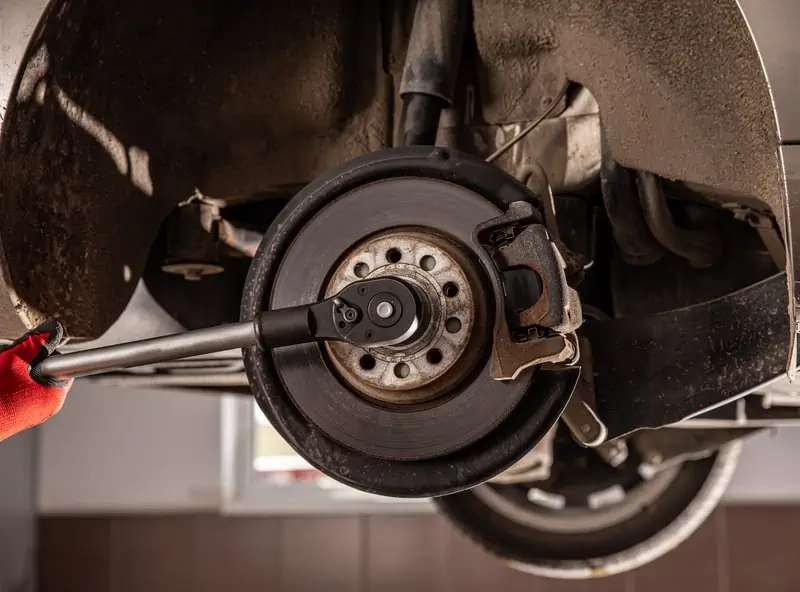Lifting a truck comes with a host of benefits—greater ground clearance, aggressive aesthetics, and the ability to conquer off-road terrain. However, one crucial area that often gets overlooked during modifications is the braking system. While suspension lifts and larger tires are exciting upgrades, they can significantly alter how your truck stops, especially under load or in emergencies. Adjusting and upgrading the braking system on a lifted truck is essential not only for performance but for safety.
Whether you’re planning to modify your existing truck or looking at a lifted F-250 for sale, understanding how braking systems need to adapt to these changes is a must. In this article, we’ll explore why braking adjustments are important for lifted trucks, what components need attention, and the best practices to ensure optimal stopping power on and off the road.
How Lifting Affects Braking Performance
Lifting a truck impacts more than just height and appearance. The entire geometry of the vehicle changes, including the center of gravity, unsprung weight, and tire contact surface. All of these factors contribute to braking behavior in ways that can make a stock braking system inadequate.
- Increased Rotational Mass:
Larger wheels and tires mean more rotational mass that your brakes must stop. This increased mass puts greater strain on rotors, calipers, and brake pads, potentially causing them to overheat or wear faster. - Changed Brake Line Angles:
When a suspension is lifted, the angles and reach of your brake lines change. Without adjustment or replacement, lines can become too tight, kinked, or stressed during travel, leading to poor braking performance or even failure. - Raised Center of Gravity:
A higher center of gravity can lead to more pronounced nose-diving during braking and increase the risk of rollover under hard stops. Properly tuned brakes and suspension are necessary to minimize this effect.
Upgrading Brake Pads and Rotors
One of the first and most essential upgrades for a lifted truck is improving the pads and rotors. Factory-installed components are designed for the stock tire size and weight, not for the added mass of off-road wheels and tires.
High-Performance Brake Pads:
Upgraded brake pads, such as ceramic or semi-metallic options, provide greater heat resistance and friction. They last longer and offer better stopping power under demanding conditions, including off-roading or towing.
Drilled and Slotted Rotors:
Drilled and slotted rotors help dissipate heat more efficiently and prevent brake fade during extended use. These are especially useful for lifted trucks that may face long downhill braking or rugged trails where consistent stopping power is vital.
Oversized Rotors:
Consider installing larger rotors to increase the braking surface area. This provides more leverage and allows for better control over the added weight and inertia from larger tires.
Caliper Upgrades for Enhanced Clamping Force
Calipers play a critical role in how well your truck brakes. Stock calipers may not apply enough clamping force to effectively slow down oversized wheels and tires. Upgrading to a multi-piston caliper system can make a huge difference.
Multi-Piston Calipers:
Performance calipers with two, four, or even six pistons provide more even pressure across the brake pad, leading to smoother, more controlled stops. They also reduce the chance of brake fade during prolonged braking.
Brake Caliper Mounting Brackets:
Lifting your truck may necessitate the use of custom caliper brackets to maintain proper alignment with larger rotors. These brackets ensure your calipers function efficiently without misalignment or uneven pad wear.
Brake Line Extensions and Braided Hoses
Your truck’s brake lines are not designed to accommodate a lift without adjustments. Stock lines may become overstretched or damaged when the suspension articulates.
Extended Brake Lines:
These are specifically made for lifted trucks and give the necessary length and flexibility to accommodate the new suspension geometry.
Braided Stainless Steel Hoses:
For enhanced durability and performance, consider replacing rubber brake lines with braided stainless steel hoses. These resist expansion under pressure and offer a firmer, more responsive brake pedal feel, especially beneficial for off-road conditions.
Master Cylinder and Brake Booster Considerations
As you upgrade calipers and increase braking power, your master cylinder and brake booster need to keep up. These components are essential for managing hydraulic pressure and ensuring you get the most out of your brake upgrades.
Larger Master Cylinder:
A bigger master cylinder can push more brake fluid, accommodating the demands of larger calipers. This helps maintain pedal feel and ensures consistent pressure across the system.
High-Performance Brake Booster:
A more powerful booster enhances braking force with less pedal effort. This is particularly important when dealing with the added weight and momentum of a lifted truck.
ABS and Brake Bias Adjustments
Modifying a truck’s suspension and tire size can throw off factory ABS settings and brake bias. The ABS may not react correctly to wheel lock-up, and uneven brake distribution can lead to poor performance.
Recalibrating ABS Systems:
Some trucks require a software update or reprogramming to ensure the ABS works correctly with larger tires and adjusted gear ratios.
Adjustable Proportioning Valves:
These valves allow you to fine-tune brake bias between the front and rear axles, ensuring optimal performance whether you’re off-roading, towing, or driving on the highway.
Tires, Weight, and Brake Dynamics
Larger tires change the overall dynamics of braking. They often have more aggressive tread patterns, which affect road contact and stopping distance.
Weight Distribution:
Lifted trucks often carry additional weight from accessories like bumpers, winches, and roof racks. This added weight affects braking dynamics and needs to be considered when adjusting brake force and selecting components.
Tire Composition and Grip:
Choose tires that provide good grip on both pavement and off-road surfaces. Tires with poor traction can compromise even the best brake systems.
Regular Maintenance and Inspection
A well-upgraded braking system still requires ongoing maintenance. Lifted trucks experience more stress than stock vehicles, making frequent inspections even more important.
Brake Pad and Rotor Wear:
Check pads and rotors for uneven wear or damage, especially after trail runs or towing. Replace components as needed to maintain peak performance.
Brake Fluid Checks:
Brake fluid absorbs moisture over time, which can reduce performance and lead to corrosion. Flush and replace fluid regularly, especially after off-road excursions.
Line Inspections:
Inspect all brake lines for cracks, leaks, or wear. Off-road driving can expose lines to debris and sharp terrain, so regular checks are critical.
Braking Best Practices for Lifted Trucks
Even with a fully upgraded system, how you drive matters. Braking technique can affect performance and safety.
Allow for Longer Stopping Distances:
Lifted trucks with larger tires take more time to stop. Keep a greater distance between you and other vehicles, especially at highway speeds.
Use Engine Braking When Possible:
Downshifting to reduce speed puts less strain on the brake system, which is helpful during long descents or when towing heavy loads.
Avoid Sudden Stops Off-Road:
Abrupt braking on loose surfaces can lead to skidding or loss of control. Use controlled, gradual braking to maintain traction and stability.
Conclusion
Braking system adjustments are a critical, often underestimated aspect of modifying a lifted truck. While the appeal of added ground clearance and off-road prowess is undeniable, safety should never be sacrificed for style. A comprehensive approach—upgrading pads, rotors, calipers, lines, and hydraulics—ensures your truck can stop as confidently as it drives.

















